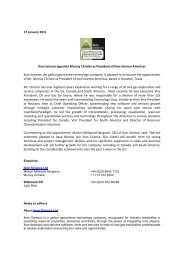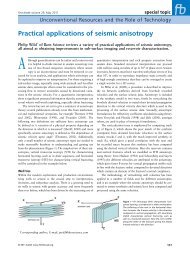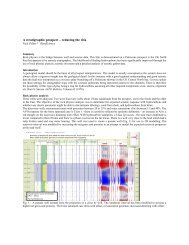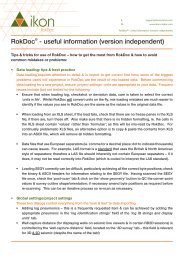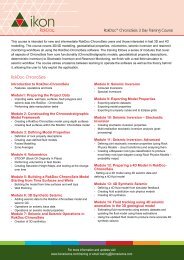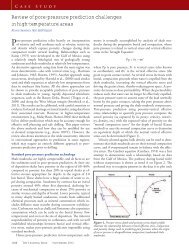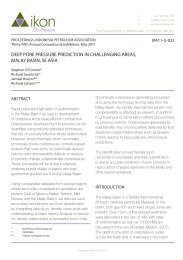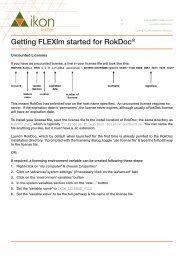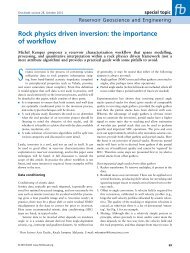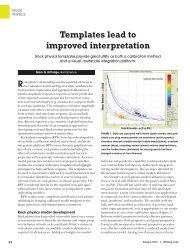Download full Paper (pdf) - Ikon Science
Download full Paper (pdf) - Ikon Science
Download full Paper (pdf) - Ikon Science
You also want an ePaper? Increase the reach of your titles
YUMPU automatically turns print PDFs into web optimized ePapers that Google loves.
Seismic Data Conditioning is more commonly known as an exercise performed on prestack gathers,<br />
however it is also applicable to partial stacks. Seismic data conditioning of the partial stacks is<br />
considered as a cost effective, progressive, alternative to seismic data conditioning of the prestack<br />
gathers<br />
Seismic data conditioning workflow<br />
All seismic partial stacks need to obtain the same phase and polarity in order to undergo spectral<br />
balancing. Well based analysis undertaken previously highlighted that the partial stacks were slightly<br />
out from zero phase. Subtle corrections would align the phase character of the wavelet with offset.<br />
The following steps were key to the analysis:<br />
1. Zero Phasing - The character of the wavelet discovered during the well analysis was used to<br />
correct the Near stack to zero phase.<br />
2. Spectral Balancing - Spectral and phase differences were corrected by designing and applying<br />
matching filters to match the Mid and Far stack to the Near stack.<br />
3. Time Alignment - misalignments were corrected.<br />
4. Offset Balancing - Knowledge gained from AVO analysis of the well data was used to<br />
balance the offset amplitudes. Fig(2) shows well synthetics used for background amplitude<br />
calculation.<br />
Figure 2: RokDoc - Well synthetic background amplitude analysis.<br />
A small subset was extracted from the partial stacks for testing of different Seismic Data Conditioning<br />
algorithms. Optimum results rely on the ability to compare the various parameter settings and modify<br />
them accordingly. The seismic data conditioning workflow tries to correct for phase, frequency,<br />
amplitude and time differences. Once the exact procedure was outlined and tested, the workflow was<br />
applied and reviewed throughout the entire volume.



